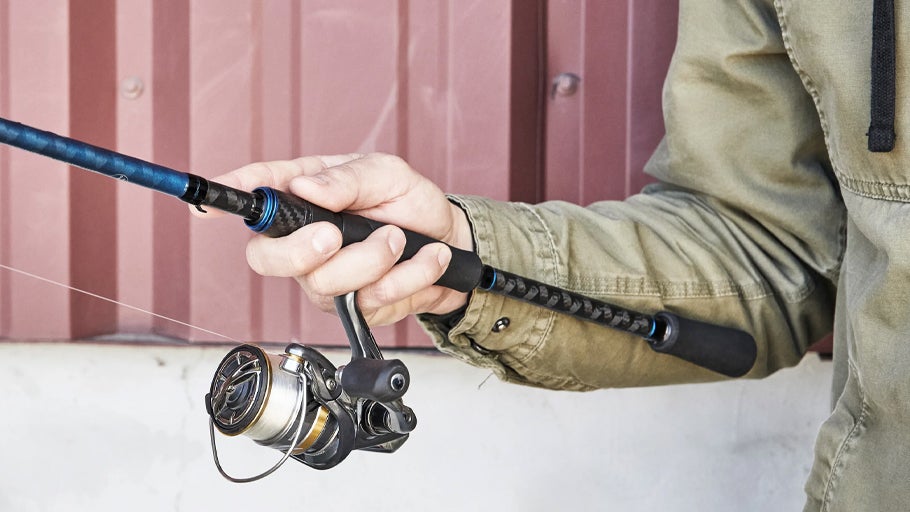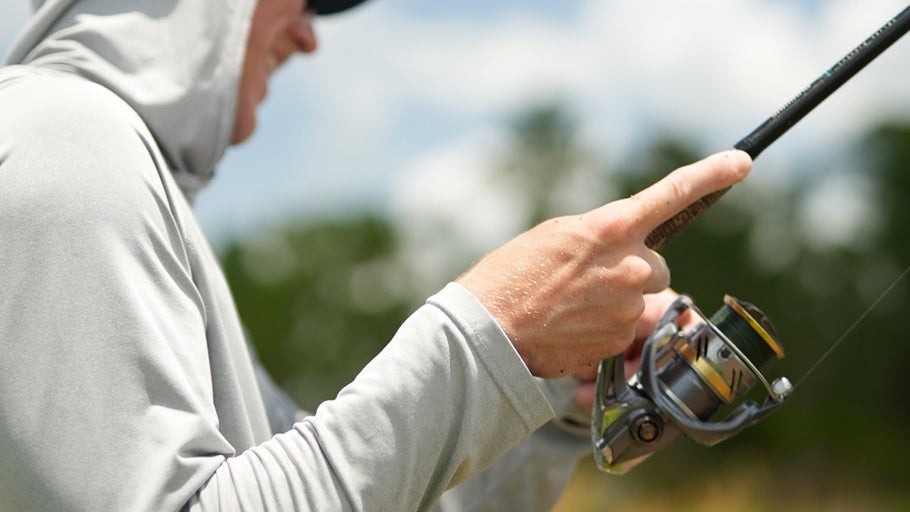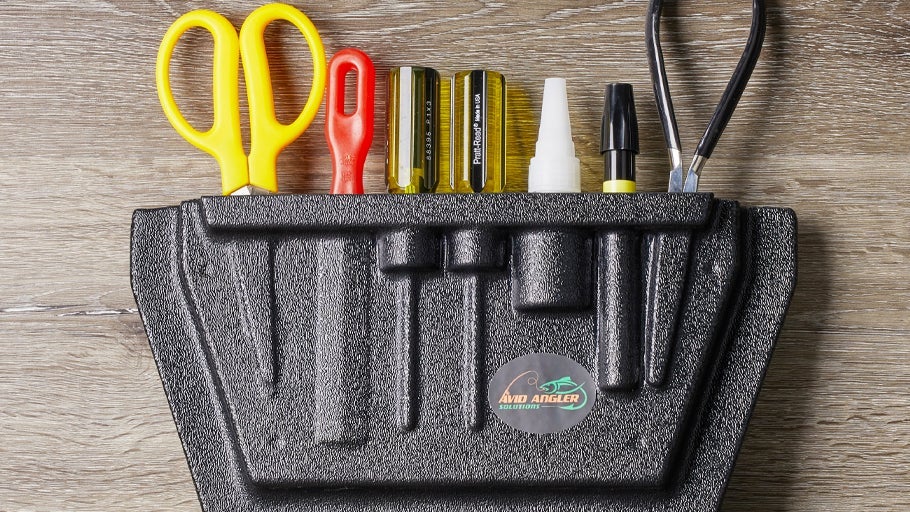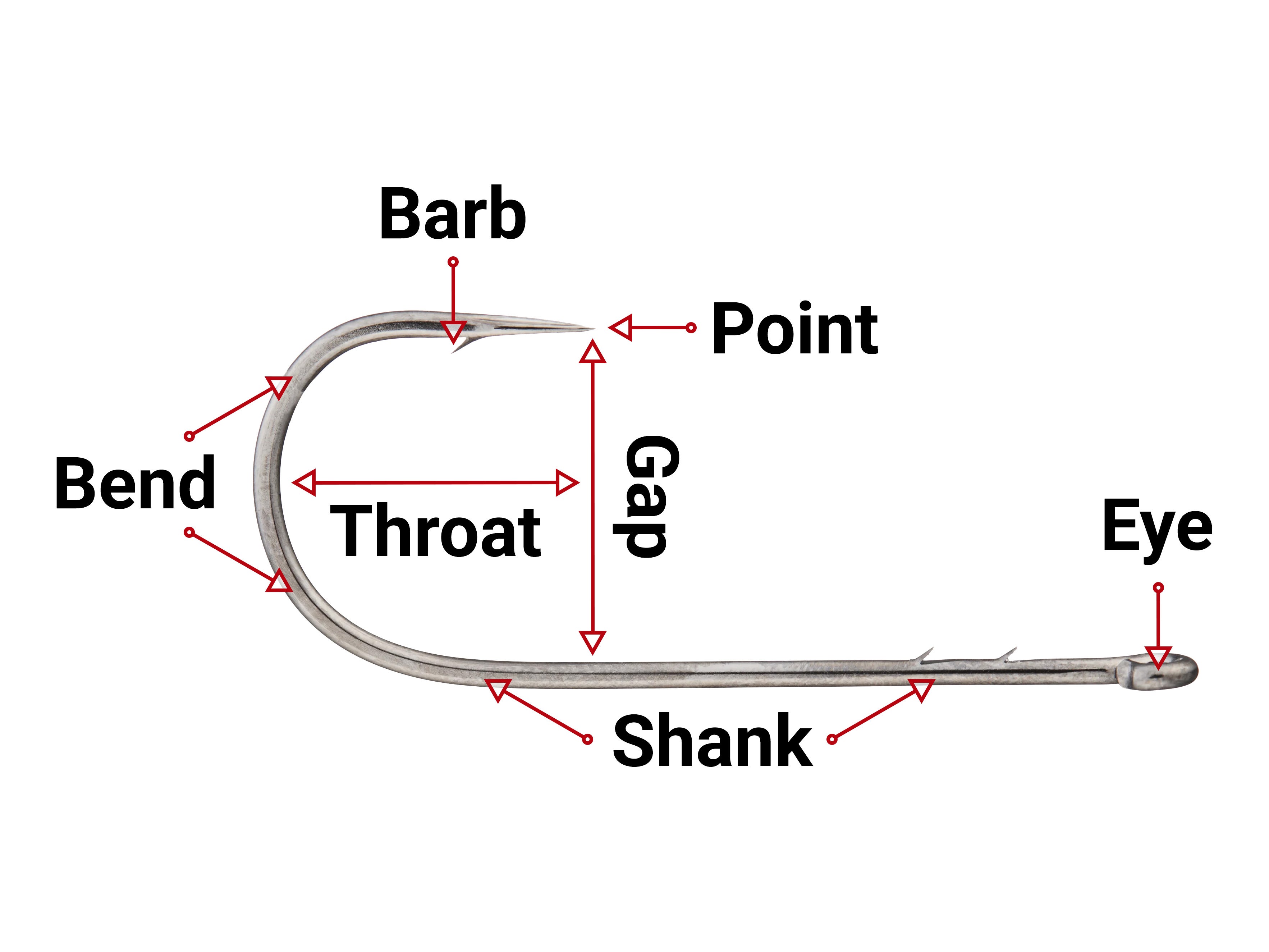
Fishing Hook Types, Sizes, and Parts Gear Guide
In the modern era of bass fishing, anglers have tons of choices when it comes to choosing the best hook for any bait or application. Second to fishing line, many agree that hooks are the most important element of an angler’s arsenal, and selecting the correct size, gauge, and shape is essential when you need to capitalize on your next big bite. The goal of this gear guide is to define the parts of a fishing hook, provide a visual representation of hooks with their corresponding size, and set a foundation for entry-level anglers to choose the right hooks with less expense and more fish catches.
Parts of a Fishing Hook
Throughout the article, we’ll reference various parts of the fishing hook to help you understand why some are shaped in a particular way and how they excel for certain bass fishing applications. Across the country, these terms may be different or interchangeable, but the graphic above provides a base of commonly accepted terms for the different parts of a fishing hook.
Hook Eye
The hook eye is the opening or loop at the top of the hook where the fishing line is attached. Depending on the type of the hook, the eye can be fully sealed (or welded), open, or paralell to the shank fo the hook.
Hook Shank
The hook shank is the straight part of the hook extending from the eye to the beginning of the bend. The shank is the backbone of the hook and helps drive the hook of the point into the fish. Depnding on the style of the hook, the eye can be straight, curved, or offset to accomodate the type of bait being attached.
Hook Bend
The bend of a fishing hook is the curved portion that connects the shank to the hook point. The bend helps support the bait and keeps the point secured to the fish's mouth. There are a couple different types of hook bends, but most common for bass fishing is a round bend.
Hook Barb
The barb of a hook is a small backwards facing point at the tip of the hook. This point prevents the hook from sliding backwards and ultimately keeps the hook pinned to the fish's mouth.
Hook Point
The point of a fishing hook is the sharp, tapered point that cuts the mouth of the fish. Arguably one of the most crucial parts of the hook, the point is the first part to make contact with the fish and allows the hook barb to engage, preventing the hook from dislodging.
Hook Throat
The throat of the hook is the distance between the hook point and the deepest part of the hook bend. This portion of the hook determines how far the hook can penetrate into the fish.
Hook Gap
The hook gap is the space between the hook point and hook shank. it is a crucial measurement when gauging how well the hook can penetrate.The hook gap is often sized depending on the size of the bait being used and the size of fish that is being targeted.
Hook Attributes and Size Measurements
Hooks are measured by a number that’s inversely correlated to its size until you reach the larger ‘aught’ sizing. Meaning that a size 1 hook is much larger than a size 8, but a size 1/0 hook is much smaller than an 8/0. For example, in a typical lineup of treble hooks, sizing from smallest to largest sizes would be as follows: 8, 6, 4, 2, 1, 1/0, 2/0, 3/0. As a rule of thumb, smaller hooks are used for smaller fish and compact baits, while larger hooks are associated with larger fish, big baits, and heavy-duty fishing applications.
Wire gauge is also essential to consider, as a light wire size 4 drop-shot hook takes very little effort to set, while a 6/0 heavy-guage swimbait hook requires a heavy hookset to ensure you get enough penetration to hook the fish. Lastly, it’s important to note that hook sizes vary from manufacturer to manufacturer, so you might find that your favorite 3/0 Mustad wide-gap hook is much larger than a 3/0 wide-gap hook from a JDM manufacturer like Ryugi.
Fishing Hook Types
Offset Worm Hook
Offset worm hooks are great all-purpose bass fishing hooks for Texas-rigging slender, soft plastic lures. The point of the hook is positioned above the eyelet to improve your chances of catching the skin of the fish’s mouth when you set the hook.
Extra-Wide Gap Worm Hook
One of the most popular hooks in bass fishing, extra-wide gap hooks provide an increased gap to shift bulky Texas-rigged soft plastics away from the point and create enough gap for a positive hookset.
Straight-Shank Worm Hook
Ideal for finesse Texas and Carolina rigs, or even drop-shot applications, straight-shank worm hooks do not have a bend to hold soft plastics, so they often include some type of bait keeper to prevent soft baits from slipping down the shank.
Straight-Shank Flipping Hook
Straight-shank hooks are also popular for flipping, pitching, and punching applications, as the moderate gap allows them to easily slide through thick vegetation to access fish sheltering inside heavy cover. When paired with a heavy bullet weight, peg, and Snell knot, straight-shank flipping hooks create a unique lever action on the hookset to help anglers improve hook-up ratios. Straight-shank flipping hooks are built with a thick gauge wire so they don’t flex on a heavy hookset, and typical sizing is confined to 3/0-5/0 sizes.
Drop-Shot Hooks (Mosquito)
In the past, a ‘mosquito’ or live bait bend was traditionally used for fishing live bait, but it has become increasingly popular for nose-hooking soft plastic drop-shot worms or wacky rigging stick baits. With a light, compact wire construction, drop-shot hooks are perfect for pairing with spinning tackle and light line finesse applications.
Wacky Hooks
Specifically designed for use with bulky soft plastic stick baits, wacky hooks feature a wide gap bend that allows anglers to rig bulky stick baits and deliver a hookset with a wacky rig. Wacky rigs excel when fished around vegetation and heavy cover, so they often include some kind of built-in or hand-tied weedguard to prevent snags.
Treble Hooks
Treble hooks are most commonly paired with moving baits like crankbaits, topwaters, and glide baits in bass fishing. Armed with multiple hook points, treble hooks increase hook-up opportunities with reaction bites and come in a wide range of sizes to accommodate any type or size of lure that you’re interested in throwing.
Screwlock Swimbait Hooks
Screwlock swimbait hooks come in both weighted and weightless model options but often have lead molded onto the shank of the hook to help the swimbait sink to the bottom and swim more naturally. Weighted swimbait hooks typically include a screw-lock bait keeper to hold the nose of the swimbait in place, as the bulky lead construction inhibits your ability to Texas-rig soft plastics by sliding them up the shank.
Trailer Hooks
Commonly paired with spinnerbaits and buzzbaits, Trailer hooks feature a large eyelet and straight-shank design that allows anglers to thread them onto the main hook of their lure to improve hook-up ratios from short-striking fish.
Hook Storage and Accessories
Just like any bass fishing lure, hooks need to be stored properly to ensure they remain sharp and don’t get damaged or rust. Whether you prefer leaving hooks in the package or placing them into their own compartment, there are plenty of storage solutions that keep your hooks organized and at the ready. It’s also a great idea to stow a hook file in your tackle bag so you can maintain a razor-sharp hook point while fishing and extend the life of your favorite hooks and fishing lures.
Ultimately, as you invest more time into bass fishing you’ll gain confidence in a particular brand or hook, and the selection process becomes less daunting as it boils down to a matter of preference or dialing in the perfect size. We hope this gear guide helps you better understand hooks so you can make more informed purchases and most importantly catch more fish!
Related Content


















































































































































































































































































































































































































































